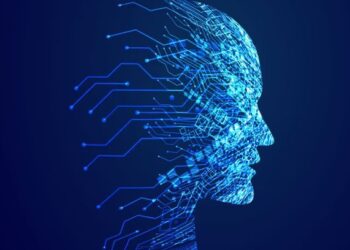Storytelling is the oldest form of human communication, a timeless method for sharing knowledge, history, and emotion. From ancient cave paintings to epic poems and classic novels, the essence of a good story has remained constant. However, the medium through which we tell these stories is undergoing a radical transformation. In an age of information overload and short attention spans, capturing an audience’s attention requires more than a compelling narrative; it demands a new approach. Digital storytelling is the art of using digital tools and platforms to craft and share narratives in innovative and engaging ways. This article will delve into the fundamental principles of digital storytelling, explore the tools and techniques that have made it a powerful force, and examine its profound impact on everything from marketing and journalism to education and personal expression.
The rise of the internet and mobile technology has democratized storytelling, giving every individual and brand a platform to share their voice. But with this newfound power comes a significant challenge: how to stand out in a sea of content. Digital storytelling answers this challenge by moving beyond linear, text-based narratives to create multi-sensory experiences. It is a blend of traditional narrative structure with modern digital elements like video, interactive graphics, social media, and immersive technologies. The goal is to not just tell a story, but to allow the audience to experience it, interact with it, and become a part of it.
A. The Core Principles of Digital Storytelling
Digital storytelling is more than just publishing a text online; it’s a strategic fusion of old and new. Its effectiveness is built on a few core principles that guide the creative process.
A. The Power of Multi-Sensory Engagement: Traditional stories rely on words. Digital stories leverage a combination of visuals, sound, and text to create a richer, more immersive experience. A simple written article can be transformed into a dynamic digital story by incorporating a compelling video clip, an interactive map, or an evocative soundtrack. This multi-sensory approach captures the audience’s attention more effectively and helps them retain information. The inclusion of elements like voiceovers or sound effects can add emotional depth, while high-quality images and video can paint a vivid picture that words alone cannot.
B. Interactivity and Audience Participation: One of the most significant shifts in digital storytelling is the move from a passive audience to an active participant. Digital platforms allow storytellers to create narratives that the audience can interact with, such as choosing a character’s path in an interactive video, exploring a 360-degree environment, or participating in a poll that influences the story’s direction. This level of engagement creates a deeper connection and a sense of personal investment in the narrative. It also turns a one-way communication channel into a two-way dialogue, allowing the storyteller to gain valuable insights from their audience.
C. Non-Linear and Modular Structure: Unlike a book with a fixed beginning and end, many digital stories are non-linear. They are often broken down into modular components that can be consumed in any order. For example, a complex news story might be presented as a series of interconnected digital chapters, including a video interview, an infographic, and a data visualization. The audience can explore the elements that interest them most, creating their own unique narrative path. This structure is particularly well-suited for the modern audience, who often consume content in short bursts across multiple devices.
B. Tools and Techniques Reshaping Storytelling
The evolution of digital storytelling is driven by a powerful and ever-expanding toolkit. These technologies have lowered the barrier to entry, empowering a new generation of creators.
A. Immersive and Augmented Reality (AR/VR): Technologies like Virtual Reality (VR) and Augmented Reality (AR) are taking digital storytelling to a new dimension. With VR, storytellers can transport their audience into a fully immersive, 360-degree world, allowing them to witness a historical event, explore a distant planet, or experience a character’s emotional journey firsthand. AR, which overlays digital information onto the real world, is used to bring stories to life in our physical environment, such as a museum exhibit where a smartphone camera reveals hidden historical facts. These technologies transform passive viewing into an active, embodied experience.
B. Data Visualization and Infographics: In an age of data overload, telling a story with numbers can be a challenge. Data visualization tools turn complex datasets into compelling, easy-to-understand narratives. An interactive chart can show how a company’s revenue has changed over time, while a dynamic infographic can illustrate the spread of a disease across a continent. These visual representations make abstract concepts tangible and allow the audience to explore the data for themselves, discovering new insights and forming their own conclusions.
C. Social Media and Micro-Storytelling: Platforms like Instagram, TikTok, and Twitter have given rise to a new form of storytelling: the micro-narrative. Brands and individuals are using short videos, image carousels, and a series of brief posts to tell compelling stories in a highly condensed format. This forces storytellers to be incredibly concise and creative, but it also allows them to reach a massive and engaged audience. The social nature of these platforms means that stories can be shared, commented on, and remixed, giving them a life of their own.
C. The Impact on Industries
Digital storytelling is more than just an artistic medium; it’s a strategic tool with a profound impact across various sectors.
A. Marketing and Branding: For marketers, digital storytelling has become the key to building a genuine connection with consumers. Instead of just selling a product, brands are telling stories about their values, their mission, and the impact they have on the world. A company selling sustainable clothing might use a digital story to show the journey of a garment from a small farm to the final product, highlighting its ethical and environmental practices. This approach builds trust and loyalty in an era where consumers are increasingly looking for authenticity from the brands they support.
B. Journalism and News Reporting: Digital storytelling has transformed journalism from a static, text-based medium to a dynamic, interactive experience. News outlets are using interactive timelines, data-driven maps, and immersive video to explain complex news stories, making them more accessible and engaging for a younger audience. A report on climate change might include an interactive model that shows the long-term effects of rising sea levels, allowing the user to see the impact on their own city. This shift makes news more engaging and helps to combat misinformation by presenting data in a transparent and verifiable way.
C. Education and Learning: In the classroom, digital storytelling is a powerful tool for making learning more engaging and effective. Teachers are using digital narratives to explain complex historical events, scientific principles, and mathematical concepts. Students can also become storytellers themselves, using digital tools to create their own projects. This not only improves their understanding of the subject matter but also helps them develop critical skills in communication, creativity, and digital literacy.
D. The Challenges and the Future
While digital storytelling offers immense potential, it is not without its challenges. The rapid pace of technological change and the constant evolution of platforms mean that storytellers must continually adapt.
A. The Challenge of Authenticity: In a world of carefully curated digital content, audiences are increasingly skeptical of what they see online. The key to effective digital storytelling is authenticity and transparency. Creators must build trust with their audience by being honest about their intentions and the sources of their information.

B. Accessibility for All: Not all digital stories are accessible to people with disabilities. Ensuring that content is designed with accessibility in mind, including features like closed captions for videos and alt text for images, is a critical ethical responsibility for all digital storytellers.
C. The Evolution of the Narrative: The future of digital storytelling lies in even more immersive and personalized experiences. We are likely to see the rise of AI-generated stories, where the narrative adapts in real-time to the audience’s preferences. The metaverse, a persistent virtual world, will become a new frontier for storytelling, allowing narratives to unfold across virtual and augmented realities.
In conclusion, digital storytelling is not just a passing trend; it is the next evolution in our long history of sharing narratives. By embracing multi-sensory engagement, interactivity, and new technologies, storytellers are creating experiences that are more immersive, more personal, and more impactful than ever before. It is a powerful tool for connection in a world that often feels disconnected, and its potential to educate, inspire, and entertain is only just beginning to be realized.













